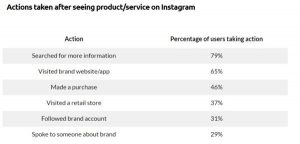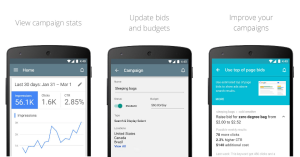
Annnddd we’re back! Just like that, the holidays were a total blur, welcome to 2017. I’m hoping that amidst catching up with family, rocking out to Mariah Carey, eating for three, and enjoying the festivities and traditions, you had a moment to enjoy some peace.
A moment (or two) to reflect on your year – on the goals you set, on the progress you made, on your amazing wins (and those slightly less amazing), and where you’ll have opportunity to grow and improve your workplace in the new year.
As an HR leader, coming back to the whirlwind of 2017 before your eighth helping of holiday ham has settled can be chaotic, but it’s still a crucial time of planning and strategy.
You’re creating budgets, prioritizing areas of focus, vetting partners, and thinking about how to move the needle based on all the feedback you’ve collected from employees this year.
Let me ask you this – where does employee recognition live on your 2017 priorities list?
It might not be a top item (yet), but it should be. Here’s why: recognition is directly linked to employee engagement and retention.
As Officevibe shared in their State of Employee Engagement report, recognition helps employees feel valued, builds their attitude for performance and motivates them, and is shown to reduce involuntary turnover by 31%1.
And with 65% of employees feeling like they don’t get enough recognition (making them twice as likely to leave their otherwise perfectly good jobs2), how are your efforts stacking up?
We empower companies to recognize top employees in a meaningful way, with experiences as rewards (i.e., employees choose to go skydiving, take a family getaway, or learn to glassblow, in lieu of cash of gift cards).
If you’re looking for how to build a meaningful recognition program for your employees in the new year, here’s how you can focus your strategy:
Make Recognition Memorable
Structure a recognition and rewards program that allow employees to associate fond memories with your company, even after they walk out your doors.
Recognition Is A Celebration
Celebrate the person in a memorable way. This means in-person, in a genuine tone (not via a drive-by on your way to refill that cup of coffee).
Be Open And Transparent
Clearly share what attributes, behaviors or efforts the employee achieved to deserve the recognition, so they know that you’re paying attention to their contributions, and to reinforce positive behaviors.
Recognize From The Top-Down
Consider looping in Sr. Management. A thank you from their boss’ boss or from a group leader goes a very long way and is incredibly sticky. I saved an email from Marissa Mayer that I received while working at Google in a special mail folder called “Smiles”, that I would occasionally re-open and read when needing a pick-me-up.
Make Rewards Exciting And Memorable
Offer rewards that create lasting memories, memories that build their affinity for your company and fuel long term employee retention and engagement.
This means scrapping things like small cash or gift card rewards that will get spent on transactional purchases like gas, groceries, or coffee.
Can you remember what you made for dinner last week? Me neither. And small monetary offerings can be troubling – if a teammate works hard on a project and gets a $ 20 Starbucks card, you’ve told them that they’re worth, well $ 20… Giving them something experiential or tangible will eliminate distractions from the monetary value, and allow them to fully enjoy their moment of recognition.
Make Recognition Personal
Craft a recognition and rewards program that is personalized to your employees’ hobbies, passions and interests.
Make Rewards Relevant
Give rewards and incentives that are relevant for your employees and aligned with your company culture.
Do you have a fun, young, light-hearted office? Reward catalogs filled with watches, pens and fishing supplies might not fit the bill. Do your employees range in age and lifestyle? Not everyone wants to toss ‘em back at yet another celebratory happy hour.
Let Your Employees Choose
Offer employees choice through a selection of rewards, so that the reward truly suits their unique personality and interests.
Some employees want to relax (and might love a spa sesh), some are more adventurous (and might want to try skydiving), others might consider themselves the ultimate foodie (and would love a tour of craft beer country or a Michelin-star dining experience), others might want something more simple like the latest piece of swag, or want to show their commitment to the company’s success through a few more shares of stock.
As an HR leader, your job is to curate a selection of relevant choices, and empower managers to work 1:1 to identify the best incentive for that particular employee. Encourage managers to inquire into their direct report’s passions and interests outside of work, make a list, and bubble up suggestions for your review on an ongoing basis.
Make Recognition Shareable
Build a recognition program that is begging to be socialized, allowing employees to bond and celebrate each other’s achievements.
In the long term this helps to create a more positive company culture and improves overall office morale.
Make Recognition Natural
Recognition should feel organic and comfortable, not showy or awkward.
Employees should look forward to all forms of recognition (casual, or formal) as a result of their contributions to the company and progress in their role.
Encourage Real-Time Feedback
Creating comfortable recognition starts with fostering a culture of real-time feedback.
Encourage managers to make a practice of sharing one thing that worked great, and one thing that could be improved upon with direct reports after key meetings, presentations or projects.
Opening the lines of communication will help managers feel more comfortable identifying positive behavior, and talking openly about accomplishments with their teams.
Make Recognition For Everyone
Empower everyone to recognize. It can be something small like crafting a company gratitude board or encouraging shoutouts on a dedicated Slack channel (we just recently installed Growbot).
If you have a bit more to invest, consider rolling out a Peer-to-Peer recognition program where employees can nominate their peers who have go above and beyond, or when they display core company values. The company can publicly recognize these individuals on a monthly, quarterly or annual basis.
Make Recognition Worth Talking About
Lastly, offer rewards that employees can talk about and bond over. We find that experiences are great for this – at Blueboard we receive experiential rewards for our work anniversaries, and I recently redeemed mine for a trip to Ecuador to tour the Galápagos Islands.
I shared my vacation video at a recent team event, which was a more authentic and exciting way to celebrate. Cash and gift cards are unfortunately very quiet – they’re tough to talk about, and easy to forget. Experiential gifts like a sunset wine cruise, learning to surf, having lunch with your CEO, or taking a continued education class are exciting and ripe for social proof (we love when Instagram explodes!).
Measure Your Impact
Beyond a program being memorable, personal and shareable – recognition programs also need to be Measurable.
What core performance metrics do you value for recognition? A few we like to focus on include:
- Engagement: measuring the general happiness of your workforce, and their passion for their work
- Motivation and performance: understanding performance rates (for sales, achieving targets, for engineers, achieving product launch deadlines), and the general level of motivation from the team (are employees going above and beyond, are they coming up with new, innovative ideas or ways to improve the business?) Are they treating the company like it’s their own?
- Tenure rates: are employees sticking around, are they referring their friends to the company?
- Company culture: measuring the general vibe of the culture, energy, communication levels, attendance and engagement at team events and outings (eating lunch together, attending all-hands, showing up for that after work happy hour)
It’s important to measure the impact of your recognition program regularly, even down to a 1:1 level with the employees your recognizing – these are your top employees, so their opinion and behavior matters!
If you don’t see changes in engagement from these top performers, your most valuable employees, something’s probably not working.
Also, rely on company-wide engagement surveys to read shifts in macro recognition sentiment trends. You can capture this in-house with free tools like Google Forms, or invest in trusted partners like Officevibe.
Once you have the practice of collecting data from your rewarded and recognized employees, plan to review it on a quarterly basis at a minimum.
At Blueboard, we offer post-experience surveys to capture engagement sentiment, comparing to baseline scores from the wider team.
This helps show the ROI on your recognition program when rewarding with experiences.
Once the data starts coming in at a significant volume, take action to continue molding your recognition efforts and rewards structure to suit the needs of your employees.
How Are You Driving A Culture Of Recognition In The New Year?
We’d love to hear your tips and tricks in the comments section below!
Business & Finance Articles on Business 2 Community(62)
Report Post





